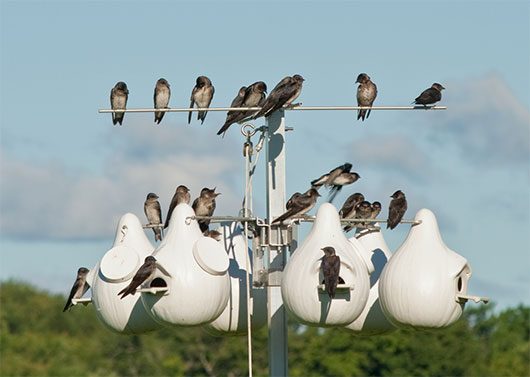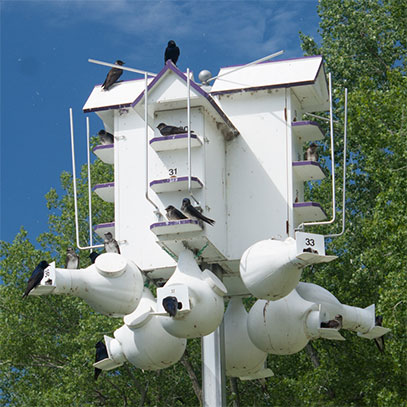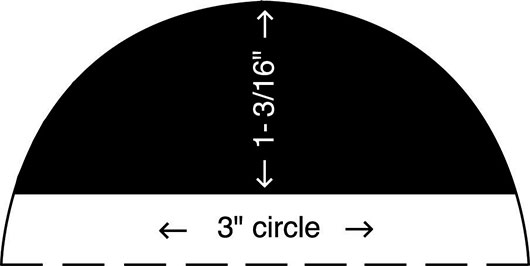Choosing Purple Martin Housing
There are many options when choosing Purple Martin housing: from houses to gourds, round or starling-resistant entrances, to the number of compartments. The most important characteristic of any martin housing is accessibility. You should be able to raise and lower the housing and open each of the cavities. Below are some of the standards to look for in any type of martin housing.
Number of Cavities: Purple Martins are colonial nesters—they like to nest in groups—so at least 4 cavities should be offered. Between 6 to 12 cavities is a great start for a colony.

Accessibility: Martin housing should raise and lower vertically on a telescoping, pulley, or winch system. Housing will need to be lowered, sometimes on a daily basis, to remove competitor nests and to monitor the nests.
How High Should the Pole Be?: Recommended height is 12-18’. Poles should be securely set in concrete, with 18”-25” below ground. Many manufacturers offer mounting sockets or stakes, so that landlords can relocate or remove their poles.
What Should it Be Made Out of?: Aluminum, thick plastic, wood, and natural gourds are all suitable materials for martin housing, provided that the exterior of the house is white in color. White reflects heat, keeping housing cooler in hot temperatures. Wooden housing should be made from untreated material only. Wood 3/4” thick will provide better insulation against heat and cold. Cedar, cypress, or redwood works well. Plastic houses and gourds should be of thick (preferably UV-resistant) material, and should not allow light to filter through the walls.

What Type of Entrance Hole?: Traditional round entrance holes are generally 2-1/8” in diameter, but a range between 1-3/4” and 2-1/4” is acceptable. Round entrances should be placed 1” to 1-1/2” above the floor or porch. Starling-resistant entrance holes (1-3/16” tall x 2-3/4” to 3” wide) should be placed so the bottom of the entrance is flush with the compartment floor, or not more than 1/4” above it. With gourds, a porch is not required with a starling-resistant entrance, although many landlords use them.
How Large Should the Cavities Be?: The minimum size for compartments is 6"H x 6”W x 6”D, but research has shown that larger compartments (measuring 6”W x 12”D) offer greater protection from predators and the elements, and will keep nestlings more comfortable. Gourds should be no less than 8” in diameter, with gourds in the 10-12” range being ideal. Adult martins are 7.5” long, so compartments must be large enough to accommodate 4-6 nearly-grown nestlings and both parents. Houses with smaller rooms can be remodeled to offer larger, two-room suites. Spacious compartments also allow nestlings to spread out to keep themselves cool in hot temperatures. Nestlings are less likely to jump prematurely when they are kept comfortable and cool inside the house. Wooden houses and natural gourds should have a natural (unpainted) interior. Metal or plastic housing with flat, slick floors could result in young developing permanently splayed legs—a potentially fatal abnormality that can be prevented by providing textured subfloors in each compartment.
Do I Need Predator Protection? Yes! Predators are everywhere, even if you never see them. It can be difficult for a colony to recover from a predator attack, so preventing an attack from happening is key. Predator baffles that attach around the pole help prevent snakes and raccoons from climbing the pole. Cages or guards around the house or gourds help prevent hawks and owls from attacking.

Recommending Reading:
Coping with Avian Predators
Predator Baffles
Tips for Natural Gourds

